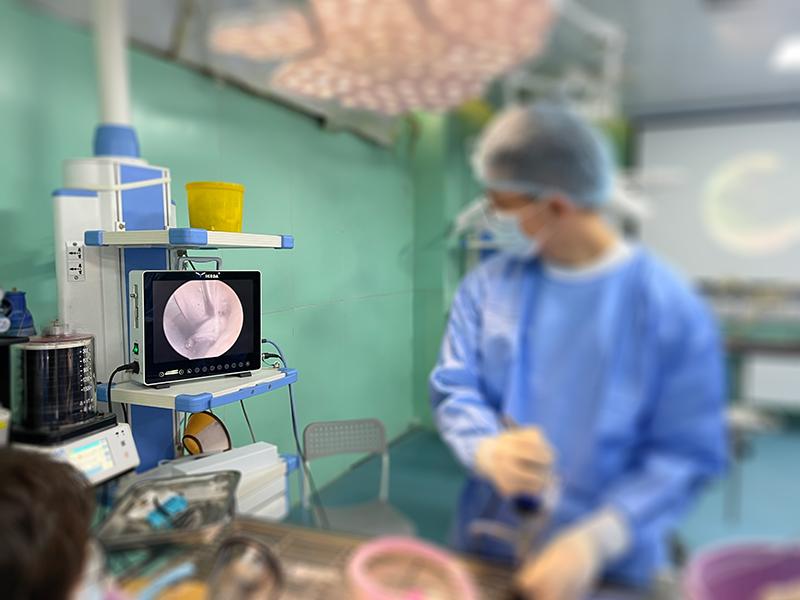In a bid to advance small animal medicine and improve treatment outcomes, the highly-acclaimed IKEDA Small Animal Endoscopy Workshop was recently held in Zhengzhou, Henan. The workshop, focusing primarily on dog and cat ear canal foreign body removal, as well as dog nasal cavity endoscopy and accurate medication techniques, brought together veterinary professionals from across the region to enhance their expertise in small animal ear and nasal cavity treatments.

The Importance of Endoscopy in Veterinary Medicine
The workshop underscored the significance of endoscopy in veterinary medicine, providing a minimally invasive approach for diagnosing and treating a myriad of conditions in dogs and cats. Compared to traditional surgical methods, endoscopy reduces patient discomfort and recovery time, while allowing veterinarians to visualize and access hard-to-reach areas more effectively.
Dog Ear Canal Foreign Body Removal
Among the primary focuses of the workshop was dog ear canal foreign body removal. Dogs are naturally inquisitive creatures and are prone to exploring their surroundings using their senses. As a result, foreign objects can inadvertently become lodged in their ear canals, leading to pain, inflammation, and even hearing loss if left untreated.
Veterinarians in attendance learned cutting-edge techniques for endoscopic examination of the ear canal, enabling them to safely and efficiently remove foreign bodies. The workshop emphasized the importance of gentle handling and the use of specialized instruments to ensure the integrity of the delicate ear structures while providing comprehensive care to their canine patients.
Cat Ear Canal Foreign Body Removal
Similar to dogs, cats are also vulnerable to ear canal foreign bodies, making this topic a significant component of the workshop. With their natural hunting instincts, cats may encounter small objects while exploring, which can lead to discomfort and potential complications if not addressed promptly.
The workshop equipped veterinarians with the skills to perform endoscopic examinations and safely remove foreign bodies from a cat's ear canal. Attendees learned the importance of careful handling and the use of appropriate instruments to prevent further injury, while also gaining insight into recognizing signs of ear canal damage and associated infections for comprehensive feline patient care.
Dog Nasal Cavity Endoscopy
The workshop also delved into dog nasal cavity endoscopy, focusing on diagnosing and treating nasal foreign bodies and nasal conditions, such as chronic rhinitis and nasal tumors. Participants were guided through the endoscopic process, allowing them to visualize the nasal cavity and identify abnormalities effectively.
By providing hands-on training, veterinarians were empowered to confidently conduct nasal endoscopy and deliver appropriate treatments, helping to prevent respiratory issues and potential complications in their canine patients.
Accurate Medication in the Small Animal Ear Canal
A significant aspect of the workshop was devoted to accurate medication techniques for small animal ear canal conditions. Ear infections are common among dogs and cats, and proper administration of medications is crucial for successful treatment and prevention of chronic problems.
Veterinary professionals learned the importance of precise cleaning and medication application in the ear canal, utilizing endoscopic guidance to ensure medications reached the affected areas effectively. This targeted approach optimized treatment outcomes while minimizing the risk of adverse side effects.
The IKEDA Small Animal Endoscopy Workshop has made a considerable impact on veterinary care for small animals, particularly in the treatment of ear and nasal cavity conditions. By equipping veterinary professionals with state-of-the-art techniques in dog and cat ear canal foreign body removal, dog nasal cavity endoscopy, and accurate medication administration, the workshop has furthered the quality of care provided to small animal patients. Attendees left the workshop with heightened expertise and confidence, paving the way for improved treatment outcomes and an overall enhancement in small animal healthcare.